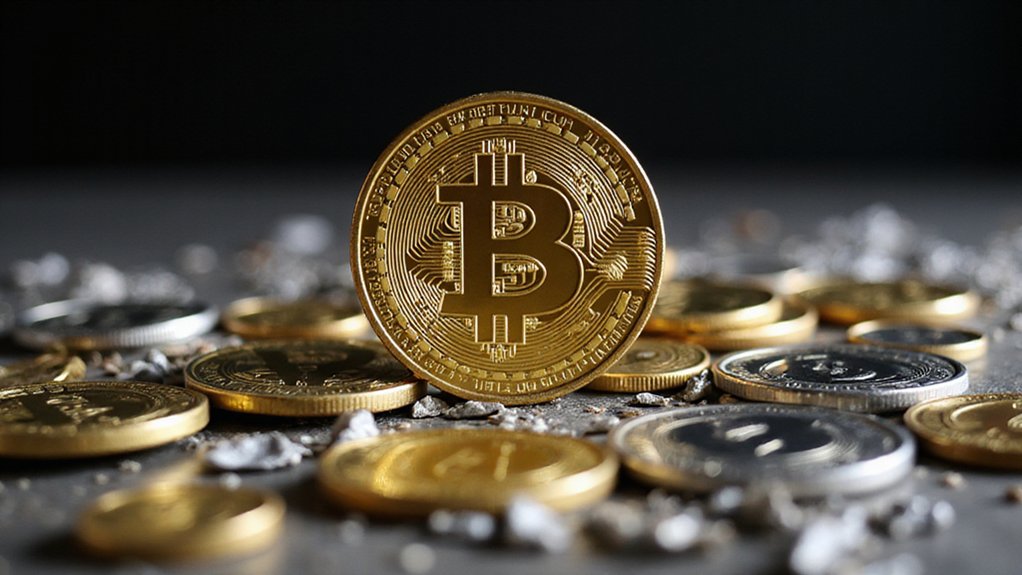Scarcity, that fundamental economic principle that turns mundane objects into treasures and reasonable people into frenzied bidders, finds perhaps its most mathematically pure expression in Bitcoin‘s deliberately constrained supply mechanism. With its hard cap of 21 million coins—a number as immutable as gravity (barring catastrophic protocol changes that would likely spark civil war among crypto enthusiasts)—Bitcoin represents an unprecedented experiment in digital scarcity that could either revolutionize monetary systems or trigger spectacular financial chaos.
Bitcoin’s 21 million coin limit transforms digital code into humanity’s most mathematically perfect scarcity experiment.
The mathematics are elegantly brutal: over 19 million bitcoins already circulate by early 2025, meaning more than 90% of the total supply exists while the final coin won’t emerge until approximately 2140. This asymptotic approach to the maximum supply, enforced by halving events that slice mining rewards at regular intervals, creates a deflationary pressure cooker where demand meets increasingly constrained availability. Unlike DeFi platforms that rely on smart contracts to enforce lending and borrowing terms, Bitcoin’s scarcity operates through its foundational protocol code.
The ownership concentration adds another layer of volatility potential. Governments control roughly 307,000 bitcoins, while an estimated 1.6 million coins remain permanently lost—digital treasure buried in forgotten hard drives and misplaced private keys. Satoshi Nakamoto’s dormant 968,000 bitcoins lurk like a monetary sword of Damocles, their hypothetical movement capable of triggering market pandemonium.
Perhaps most intriguingly, “ancient supply”—coins untouched for over a decade—now comprises approximately 17% of total issuance, reflecting either supreme confidence or collective amnesia about password management. When these digital hibernators occasionally stir (as observed post-2024 election), markets tremble at the implications of increased liquidity. The computational burden intensifies as mining difficulty increases exponentially, compounding the scarcity mechanism through increasingly resource-intensive validation requirements.
The paradox deepens when considering institutional adoption: companies like MicroStrategy and various governments accumulate substantial reserves, further constraining liquid supply while amplifying price volatility. This creates a feedback loop where scarcity breeds more scarcity, as hodlers withdraw coins from active circulation.
Should Bitcoin’s supply mechanism face modification—whether through protocol updates or unforeseen technical constraints—the resulting chaos could make traditional monetary policy debates seem quaint by comparison. The intersection of mathematical certainty and human psychology rarely produces predictable outcomes, particularly when trillions of dollars hang in the balance.








